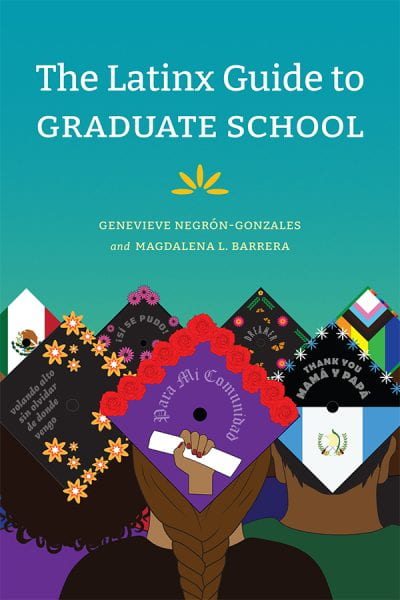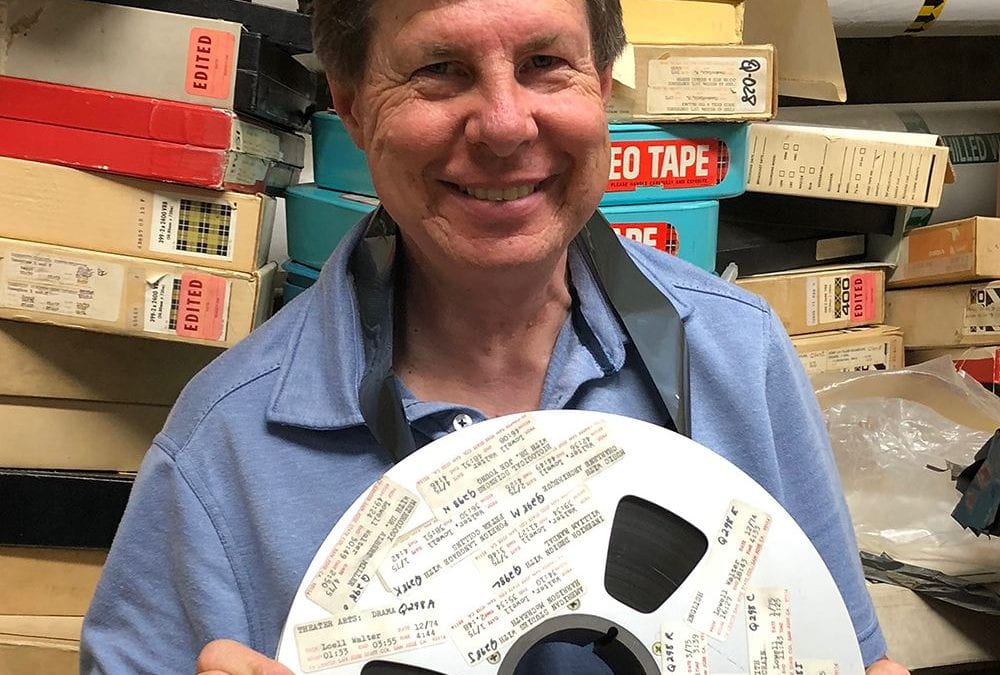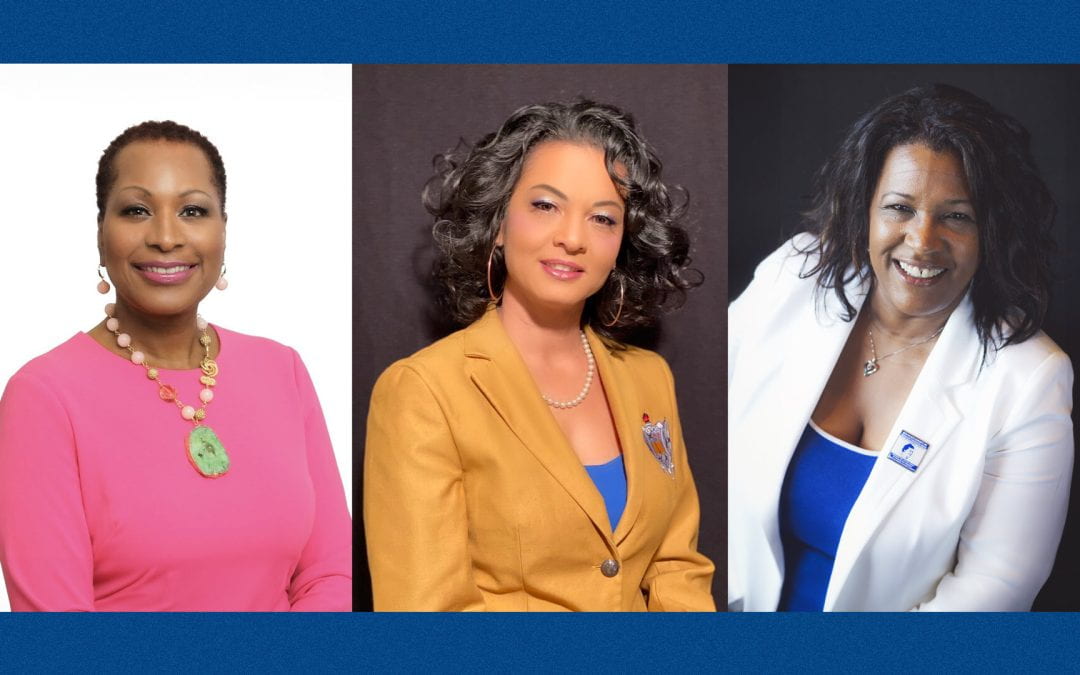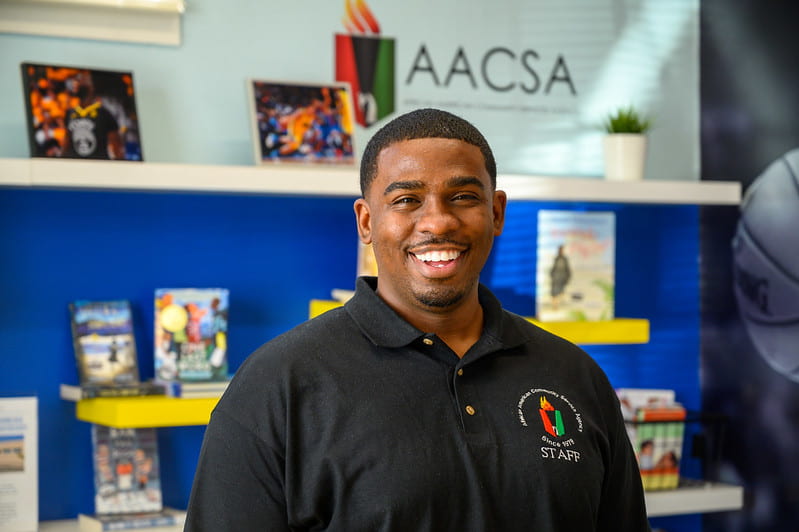“Be the Lantern:” Magdalena Barrera’s Guide to Graduate School, Identity in Higher Education and the Joy of Spartan Pride

Vice Provost for Faculty Success Magdalena Barrera (center) with Associate Professor of Teacher Education Luis Poza (left) and Assistant Professor of Chicana and Chicano Studies and Faculty-in-Residence for HSI Initiatives Jonathan Gomez (right), at the Chicanx/Latinx Student Leadership Retreat in October 2019. Photo by Nanzi Muro, ’19 BFA Photography.
Magdalena Barrera has a favorite planner. Each page is organized into a grid of squares, boxes and tables, though the days are undated and the templates are interchangeable — offering flexibility and space for, say, a higher education administrator, celebrated academic and champion of student success to juggle it all.
“I like to visualize how we use our time and how different processes unfold because it’s key part of understanding how you know what to communicate, to whom and when,” said Barrera, San José State University’s vice provost for faculty success since 2020 and former chair of SJSU’s Department of Chicana and Chicano Studies.
“I enjoy thinking about these things intellectually in terms of higher ed. Often, once we get into the rhythm of things, we think we’ve always done things this way, but why? Is this the most efficient way? And could we make it easier for other people, especially first-generation students and faculty, to enter that process and understand how to navigate it?”

Barrera and co-author Genevieve Negrón-Gonzalez met as faculty in SJSU’s Chicana and Chicano Studies Department. Their guide comes out in early 2023.
Barrera isn’t the only administrator or faculty member to ask these questions — nor is she the first. As a Latinx academic and higher education professional who was a first-generation student, she’s very familiar with the roadblocks that her students encounter while pursuing their degrees. That’s why she partnered with Genevieve Negrón-Gonzales, associate professor of leadership studies at the University of San Francisco, to create “The Latinx Guide to Graduate School” (Duke University Press 2023).
The book offers practical tips ranging from determining if and when graduate school is an appropriate fit to navigating personal and professional relationships in academia, pursuing research and publication pathways, and exploring post-graduation opportunities. Barrera and Negrón-Gonzales also tackle deeper questions as they relate to cultural identity, such as how to contextualize a graduate degree to one’s family or how to find financial aid resources for undocumented students.
Barrera says that Latinx scholars are “often made to feel less than or that we are outsiders to the academy.” She hopes that the book helps readers understand “how to orient yourself to graduate school, so you don’t internalize any negativity, and you understand what cultural strengths you bring to your studies — the same strengths that can help you sustain, thrive and do really meaningful work, not only intellectually for a community of scholars but also for the communities we represent.”
Alonzo Campos, ’12 MA Mexican American Studies, reviewed an early draft of the guide while completing his doctorate at Claremont Graduate University. Barrera became his mentor during his master’s work at SJSU and has remained a steadfast influence as he navigates his career. He saw the guide as one manifestation of her commitment to demystifying academia, especially for first-generation students.
“Oftentimes, as students, we see professors or mentors and think, ‘Wow. They have these degrees and titles. How cool,’” he said. “But with this book, Drs. Barrera and Negrón-Gonzalez made space to share and remind us: Behind every title and degree, there is a story.”
And, he added, those stories are meaningful.
Shine a light
Whether she is working with students, faculty or fellow administrators, Barrera recognizes that everyone, regardless of identity, may need different types of support. She recalls an influential paper by higher education scholar Monisha Bajaj that compares “street sign and lantern” mentors, differentiating leaders who provide step-by-step “street sign” instruction from those who “shine a light to help you see more of the whole structure, so you can determine your best route.”
“Lantern mentors say, ‘This is what I understand of this process. Let’s talk about different options,’” she added. “To get to your destination, you may make very different choices than I did; you may take a different route. And that’s okay.”
Integrating identity into education

Vice Provost for Faculty Success Magdalena Barrera co-authored “The Latinx Guide to Graduate School.” Photo by Robert C. Bain.
As a faculty member for more than 14 years before transitioning into her role in educational administration, Barrera sees the value in both kinds of mentors — and hopes to demystify academia for Spartans.
“The Latinx Guide to Graduate School” demonstrates Barrera’s commitment to improving equity in higher education. Prior to joining the Office of the Provost, she served as the inaugural director of the Ethnic Studies Collaborative in the College of Social Sciences; faculty-in-residence for Diversifying the Faculty in the Office of Diversity, Equity, and Inclusion; and faculty fellow at the Chicanx/Latinx Student Success Center. She also plays a leadership role in SJSU’s newly-formed HSI Institute, established in 2021 with a $1 million gift from Adobe as part of its Anchor Schools Program.
Because more than one quarter of SJSU’s full-time student population identifies as Hispanic, the university qualifies as a federally-designated Hispanic-Serving Institution (HSI). But beyond demographics, what does that mean for students, faculty and staff alike?
“How do we really support students, so they are thriving?” Barrera asks. “No matter what your role is on campus, how do you integrate an HSI identity into your day-to-day work?”
She hopes to make SJSU’s HSI Institute a destination for professional development that demonstrates how to create and implement culturally-sustaining, asset-based and academically affirming pedagogies and curricula, particularly around digital literacy and community building. Faculty involved in the institute are creating curricula that emphasize inclusivity and belonging.
A recent example is the digital counter-storytelling faculty learning community, a project that teaches faculty members how to create assignments that elevate marginalized voices to disrupt mainstream narratives about historically underserved communities, using Adobe products to capture those perspectives. In time, Barrera hopes that faculty, graduate students and undergraduates alike can benefit from the HSI Institute’s resources and training.
“My experiences at San José State — the interactions I’ve had with students in the classroom and in office hours, and the campus events over the years, as well as my interactions with my colleagues — have really changed how I see my mission and purpose in higher ed,” she recalled.
After dedicating much of her early career to humanities-based cultural studies, she has shifted to writing about higher education itself.
“Now, I enjoy writing about the experiences of historically underserved faculty and students, and thinking about how we navigate higher ed. It’s a reflection of how SJSU has really shaped me over the years.”
Learn more about Magdalena Barrera.




